December 2010

Chris Van Allsburg
The Polar Express
Boston: Houghton Mifflin, 1985
Gould Library
The arrival of a steam engine — the Polar Express — on the boy’s quiet street is startling and wonderful enough to make readers gasp out loud. In The Polar Express, Van Allsburg constructs a distinct sense of place, infused with magic by his skillful use of metaphor and simile. The train is “wrapped in an apron of steam,” and the children drink hot cocoa “as thick and rich as melted chocolate bars.” The lights of the North Pole appear to the boy as “the lights of an ocean liner sailing on a frozen sea.” Throughout the book, the warm and vivid color pastels of Allsburg’s illustrations create expressive characters and scenes that are very much alive. The vivid visual world of The Polar Express is evoked by the text as well as by the pictures. The Polar Express describes a journey (both literal and symbolic) that brings about transformation for the characters and the reader as well. The Polar Express reminds children and adults alike that the world is full of wonder—all one must do is look for it, listen, and believe.
“At one time, most of my friends could hear the bell, but as years passed, it fell silent for all of them. Even Sarah found one Christmas that she could no longer hear its sweet sound. Though I’ve grown old, the bell still rings for me, as it does for all who truly believe.”
November 2010
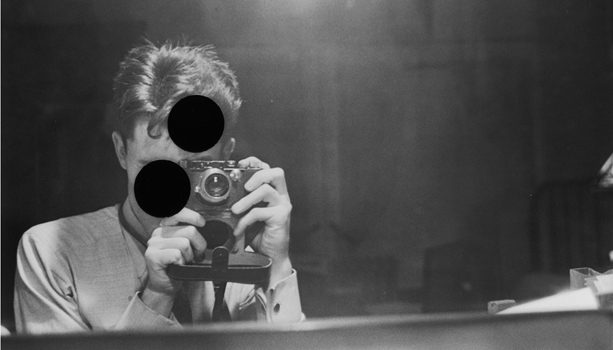
William E. Jones
Killed: Rejected Images of the Farm
Security Administration
New York: PPP Editions in association with Andrew Roth Inc., 2010
Gould Library
The images in this book come from the archives of the Farm Security Administration/Office of War Information, a collection of over 170,000 photographs taken between 1938 and 1944 by photographers hired to document American life. The photography project was supervised by Roy E. Stryker. Stryker reviewed the negatives before they were printed, marking those he considered unsuitable by punching holes directly through the film, destroying the image. Many of the negatives that Stryker “killed” were poor-quality photographs, under- or over-exposed, blurry, or accidentally exposed. In other cases, however, the decision simply reflected his personal aesthetic taste.
The images in this book were selected from the archive by artist William E. Jones, When he began the project, Jones was hoping to unearth photographs that documented a previously hidden queer presence in the historical archive. As he looked, however, Jones became fascinated with the censored images. Some of these images suggest a queer presence: men dancing together in a dimly-lit bar, friends on a road trip, young men posing together in formal wear. By collecting all sorts of images deemed inappropriate, unsuitable, or unattractive, Jones presents what he terms a perversion of the collection, a perversion that helps us see the these images in a way Stryker never intended, and never anticipated. Jones writes,
I use the word perversion in the sense of putting the collection to improper use, or distorting its original intentions. I contend that perverting this important compendium of documentary photography is desirable, even necessary. Its photographs have become so encrusted with conventional pieties that we can hardly see them any longer.
October 2010
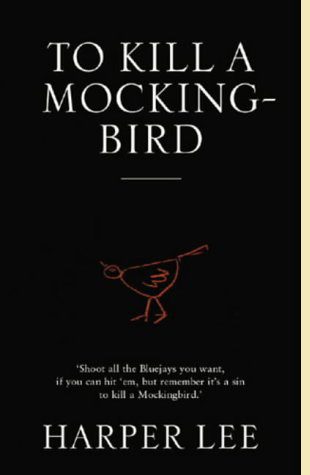
Harper Lee
To Kill a Mockingbird
Philadelphia: Lippincott, 1960
Gould Library
This year marks the 50th anniversary of the publication of To Kill a Mockingbird, Harper Lee’s Pulitzer Prize-winning novel. In the fifty years since its publication To Kill a Mockingbird has sold 30 million copies and been translated into dozens of languages.
This book has been in the collection of Gould Library since 1960 and it reflects decades of steady use: the pages are dog-eared and marked with notes and the edges are soft and worn. It has been cut from its original cover and rebound – and even this new binding shows signs of wear. For fifty years, this volume of To Kill a Mockingbird has served the readers of the Carleton community.
September 2010
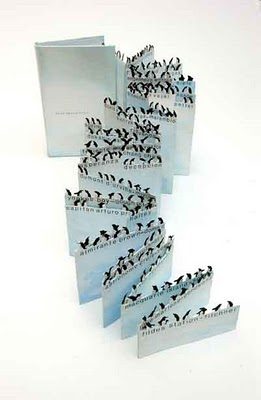
Nicole Morello
Save Antarctica
Düsseldorf: 1998
Gould Library Special Collections
This accordian-fold artist’s book by Nicole Morello features cut-out penguins arranged in a line atop a gradually diminishing icy-white landscape embellished with Antarctic place names. Save Antarctica reflects two collecting areas of particular interest to Gould Library Special Collections: artist’s books (the collection includes more than 400 examples) and polar studies (former college president and library namesake Laurence McKinley Gould was an Antarctic explorer).
June 2010
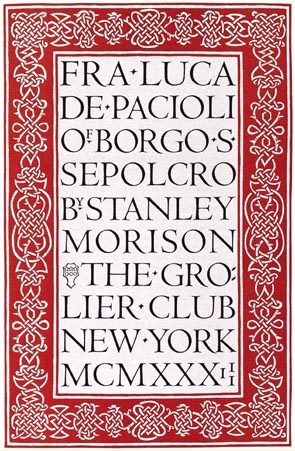
Albrecht Dürer
Of the just shaping of letters: from the Applied geometry of Albrecht Dürer, book III
Designed by Bruce Rogers
New York, Grolier Club, 1917
Carleton College’s Bruce Rogers Collection Bruce Rogers was an exceptional bookmaker. Although he wouldn’t self-identify as a book artist for fear of elevating his books beyond the common person’s reach, Rogers’ designs and decorations were unique and exquisite. According to Joseph Blumenthal’s account: Rogers never forgot that books were meant to be read; his were rarely precious or flamboyant; never objets d’art to be preserved behind glass. Ironically, Rogers’ book is here displayed behind glass, but not with the intention of creating a barrier between reader and book. Rather, the book is vivid and accessible as it sits in its temporary nest. In 1896, Rogers’ started designing at Houghton Mifflin’s Riverside Press, and quickly grew proficient in printing and design, skills he demonstrated in both advertising and trade books. This book of Durer’s alphabet was made in an edition of 350 for the Dunster House Bookshop in 1924. Durer’s alphabet was constructed for the guidance of architects, painters, and others, and Rogers displayed rare genius in transforming this alphabet into a beautiful series of shapes; never before has the letter “A” looked so impressive.
May 2010
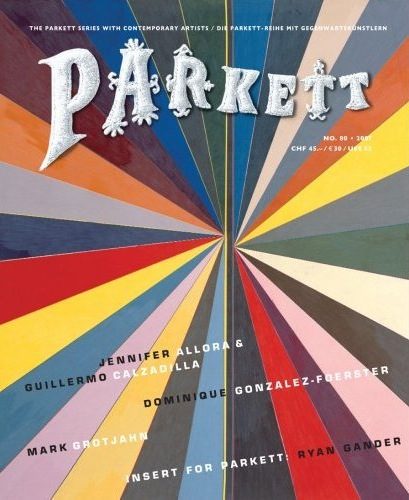
Insert by Ryan Gander Parkett No. 80
Zürich: Parkett Verlag, 2007
Gould Library Periodicals
When this issue of Parkett arrived in the library, it was incomplete: pages 161 through 170, the section devoted to an artist’s project by Ryan Gander, had been ripped from the magazine. In fact, the missing pages were torn out of every copy of Parkett No. 80, in accordance with the instructions of the artist. Each page was torn out by hand, one at a time, creating 12,000 original works of art in the pages of the magazine. Gander provided a link to a PDF of the “missing” pages. Displayed here, the colored pages were inspired by Gander’s ongoing interest in Le Corbusier, the Swiss-French architect and designer.
Advertisement! To the several printers in Hartford, New-Haven, New-London and Norwich. Pray print the following immediately!…
Middletown, Conn.: Printed by Moses H. Woodward, 1796
Readex: Early American Imprints,
Series 1, no. 47696
This broadside calls for seventeen fool’s coats and seventeen caps adorned with tassels and bells to be delivered to Middletown on April 1, 1796, where Sancho Panca, the master of ceremonies, will pay a handsome price for them. This broadside comes from Early American Imprints, 1639-1800, a digital collection of books, pamphlets, and broadsides published in American in the 17th and 18th centuries. Carleton subscribes to this online resource, which provides access to thousands of important historical documents, including maps, broadsides, speeches, political pamphlets, sermons, and April Fool’s pranks
March 2010

Man Ray Photographies, 1920-1934, Paris
Hartford, Conn.: J.T. Soby, 1934.
By Man Ray
Gift of Jerome Mellquist ‘26
Gould Library Collections
It is in the spirit of an experience and not of experiment that the following autobiographical images are presented. Seized in moments of visual detachment during periods of emotional contact, these images are oxidized residues, fixed by light and chemical elements, of living organisms.
-from Man Ray Photographies
With this vivid description of the photographic process, Man Ray introduced his book of 84 black-and-white photographs and 19 rayographs, images made by placing objects directly on the photographic plate. Born in Philadelphia in 1890, Man Ray became one of the most innovative photographers of the century. He lived and worked in Paris, where he met friend and collaborator Marcel Duchamp and other Dada and surrealist artists and writers. This book features portraits of a number of Man Ray’s Parisian colleagues and friends, and texts by such renowned figures as Paul Éluard, André Breton, Rrose Sélavy (Marcel Duchamp) and Tristan Tzara. This particular volume has an interesting history: Man Ray inscribed the book to Jerome Mellquist ‘26, a Carleton alum who must have met Man Ray in Paris in the 1950s. Mellquist ‘26, a Carleton alum who must have met Man Ray in Paris in the 1950s. Mellquist, an art historian, lived in France for fifteen years and was killed in a railway accident in Holland in 1963. And so, Gould Library acquired this rare and interesting book.
February 2010
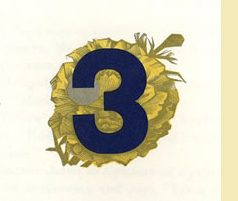
The Coriolis Effect
Edwidge Danticat (1969- )
Copy no. 47, signed by Edwidge Danticat & Gaylord Schanilec
Stockholm, Wisconsin: Midnight Paper Sales, 2002.
Gould Library Special Collections
We are all part of this Coriolis effect, I say. We are the wind and ocean currents that move one another from joy to happiness and back to pain.
—from The Coriolis Effect
The Coriolis Effect consists of twelve short prose pieces inspired by the writing lessons in a workbook for English-language learners. The author, Edwidge Danticat, came to the United States from Haiti when she was twelve years old and published her first story two years later. Gaylord Shanilec is a bookmaker, engraver, and the founder of Midnight Paper Sales. He is widely known for his elegant, unusual books inspired in equal part by life on a farm in western Wisconsin and by texts from his favorite authors. In addition to The Coriolis Effect Danticat and Shanilec collaborated on Plunging (2009), the story of an immigrant worker who died in a fall on a construction site.
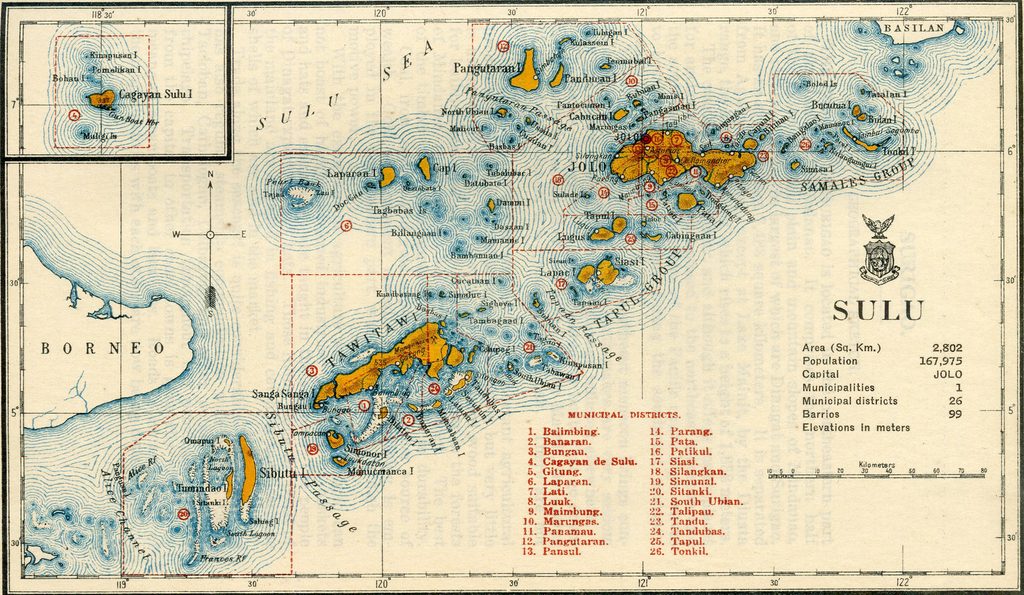
Census of the Philippine Islands, Taken under the direction of the Philippine Legislature in the year 1918
In four volumes, Volume 1 Director Ignacio Villamor
Compiled and Published by the Census Office of the Philippine Islands
Manila, Bureau of Printing, 1920
Although the first census of the Philippines was taken in 1878, it wasn’t until the 1918 census that the directorship and all subordinate positions were filled by Filipinos. On March 2, 1918, the Philippine Legislature appropriated one million pesos for the taking of the census, and Census Day was scheduled on December 31 of that year. Francis Burton Harrison, the governor-general of the Philippines in 1918, aptly describes the nature of the “new census” in his introduction to the volume: It is hoped that the census will be a genuine expression of the actual conditions of the Philippines with her riches and poverties fully exposed without pretensions, false modesty, or misrepresentation. The Census will not, therefore, be a dry and confusing memorandum book, but a collection of social data, information and facts of all kinds…In a word, the Census will be of indispensable utility to everybody interested in the progress and welfare of the Philippines.